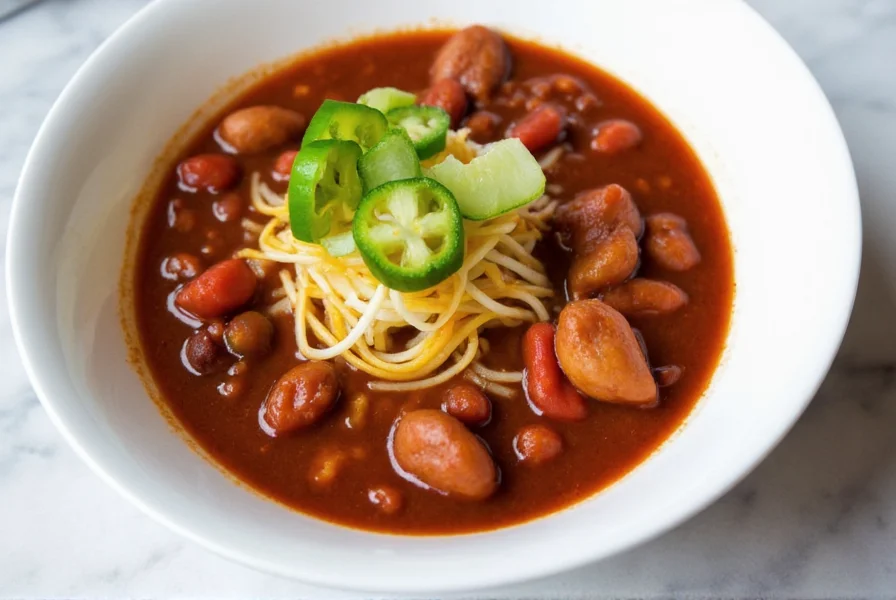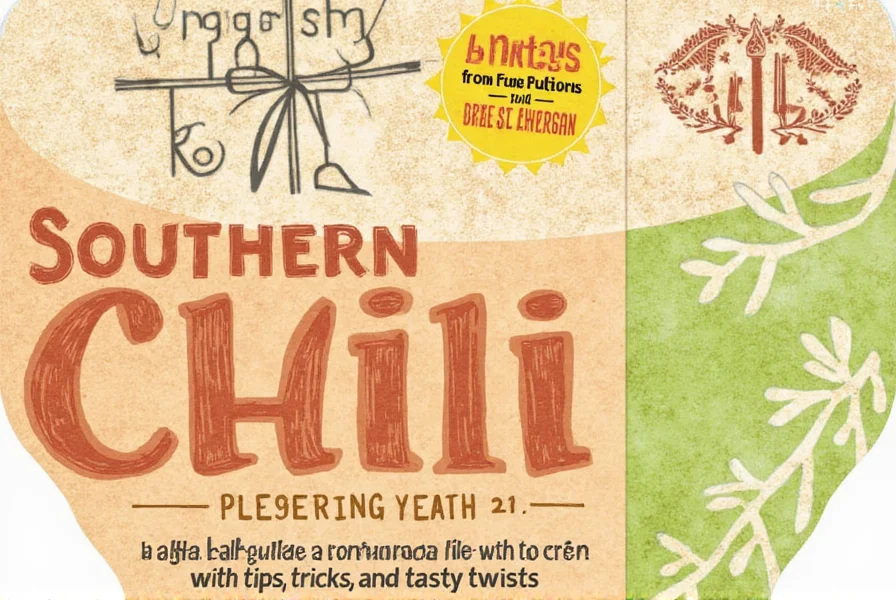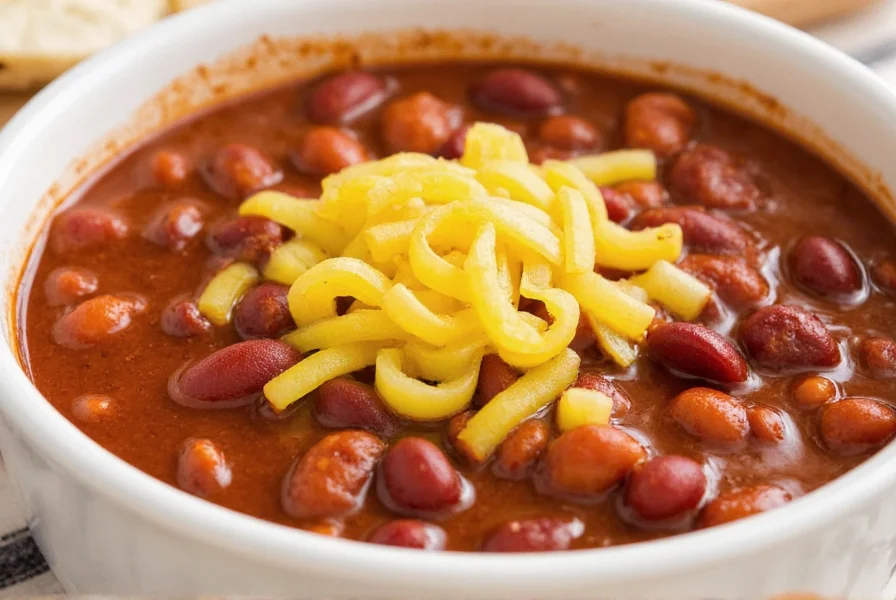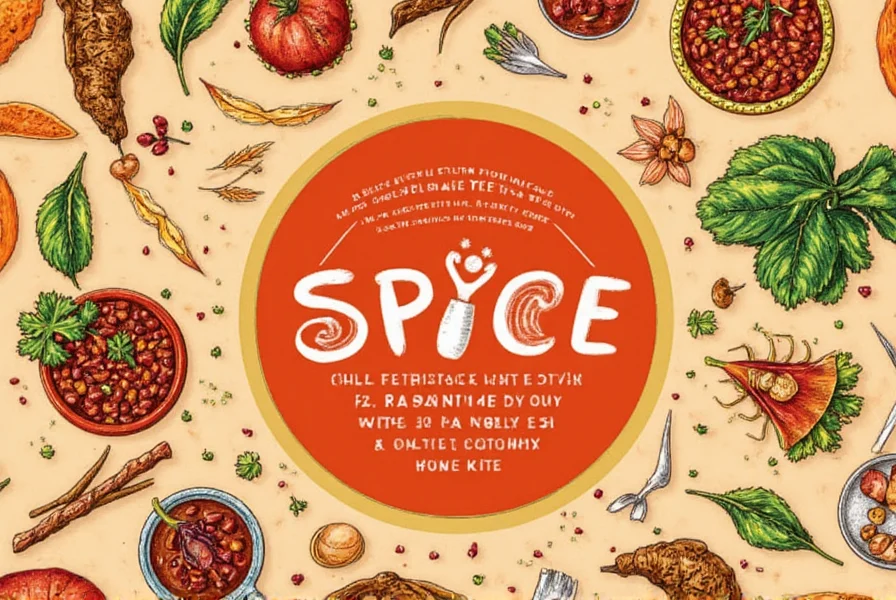Learn how to make the perfect Southern Homemade Chili with this easy step-by-step recipe. This authentic guide includes regional variations, spice charts, and expert tips for the best results every time.
\n \n
\nHow to Make the Perfect Pot: Step-by-Step
\n- \n
- Brown the Meat: Start with quality ground beef (or plant-based alternative) and brown it thoroughly to build that deep umami base. \n
- Sweat the Aromatics: Onions, garlic, bell peppers—cook them slowly until fragrant but not burnt. \n
- Add Tomatoes: Use tomato paste for richness or crushed tomatoes for moisture and acidity. \n
- Spice it Up: Mix your favorite chili powders, smoked paprika, cumin, and a pinch of cinnamon for complexity. \n
- Incorporate Beans: Add rinsed pinto or kidney beans during the last hour of cooking to keep their texture intact. \n
- Simmer Low and Slow: Let it cook for at least 1–2 hours so flavors meld beautifully. Stir occasionally. \n
- Taste and Adjust: Does it need more salt? More heat? Maybe a splash of cider vinegar for brightness? Trust your taste buds! \n
 \n
\nPro Tip:
\n- \n
- Letting chili rest overnight makes it taste even better the next day. \n
- Add a splash of beer or dark chocolate for a deeper, smoky note. \n
- For a vegan option, use lentils or mushrooms as a meat substitute. \n
What Makes Southern Homemade Chili Special?
\nSouthern homemade chili isn’t just about tossing meat, beans, and peppers into a pot and hoping for the best. It’s a ritual—a celebration of flavor, community, and comfort that varies from town to town, and even from kitchen to kitchen.
\nAt its core, classic southern chili usually features:
\n- \n
- Browned ground beef (or sometimes turkey) \n
- Tomato paste or crushed tomatoes \n
- A hearty mix of beans (pinto or kidney are common) \n
- The holy trinity of spices: chili powder, cumin, and garlic \n
 \n
\nBut what makes it truly special is the soul behind the spoon—how each family tweaks the recipe with love and lore. Some add a dash of cocoa for depth, others sneak in coffee or molasses for sweetness and smoke.
\nFrom Texas to Tokyo: How the World Spices Up Chili
\nYou might be surprised to learn that southern homemade chili isn't just a regional dish anymore—it’s gone global! Every culture has taken the basic concept and added its own twist, creating fascinating flavor fusions along the way.
\n| Region | \nSpice Level | \nUnique Ingredient | \nTaste Profile | \n
|---|---|---|---|
| Texas, USA | \nModerate | \nDried Ancho Peppers | \nSmoky & Earthy | \n
| New Mexico, USA | \nHot | \nHatch Green Chilies | \nGrassy & Fiery | \n
| Mexico | \nVery Hot | \nPasilla Negro | \nChocolatey & Bold | \n
| India | \nExtremely Hot | \nKashmiri Chili Powder | \nVibrant & Fruity | \n
| Japan | \nMild | \nShichimi Togarashi | \nCitrusy & Umami | \n
Whether it’s a Japanese version served over rice, or a Mexican-style chili con carne infused with cinnamon and cloves, these adaptations remind us that while recipes may differ, the joy of chili unites people across cultures.
\nSpice Comparison Chart: Mild to Wild
\nChoosing the right spice level can make or break your chili experience. Here’s a handy chart to help you pick your preferred kick!
\n| Spice | \nHeat Level (Scoville Scale) | \nFlavor Notes | \nBest For | \n
|---|---|---|---|
| Paprika | \n0–1,000 SHU | \nSweet & Smoky | \nBeginners or mild dishes | \n
| Ancho | \n1,000–2,000 SHU | \nFruity & Earthy | \nRich, deep flavors | \n
| Jalapeño | \n2,500–8,000 SHU | \nGrassy & Bright | \nSouthwestern flair | \n
| Cayenne | \n30,000–50,000 SHU | \nSharp & Spicy | \nHeat lovers | \n
| Habanero | \n100,000–350,000 SHU | \nTropical & Fiery | \nExtreme spice challenges | \n
 \n
\nBuying Guide: Spice Kits, Beans, and Beef Options
\nNot sure where to start when picking out ingredients? Don’t worry—we’ve got you covered with our top picks for each category.
\nTop Chili Spice Kits
\n| Product Name | \nFeatures | \nUse Case | \nWho Is It For? | \nBest Occasion | \n
|---|---|---|---|---|
| McCormick Gourmet Chili Kit | \nPremixed spices + recipe card | \nClassic red chili | \nBeginners and quick cooks | \nWeeknight dinners | \n
| Spicewalla Chili Blend | \nArtisan, small-batch spices | \nCustomizable heat levels | \nHome chefs and spice lovers | \nWeekend cooking sessions | \n
| La Flor De Jalisco | \nMexican-inspired spice kit | \nMole-style chili | \nMexican cuisine fans | \nTaco nights and fiestas | \n
Best Bean Options
\n| Brand | \nType | \nTexture | \nFlavor Notes | \nBest For | \n
|---|---|---|---|---|
| Camaro Pinto Beans | \nDried | \nFirm and creamy | \nEarthy and hearty | \nSlow cooker chili | \n
| Del Monte Kidney Beans | \nCanned | \nFirm and meaty | \nMild and nutty | \nQuick prep batches | \n
| Organic Great Northern Beans | \nDried | \nTender and smooth | \nDelicate and buttery | \nWhite chili variations | \n
Meat Selections
\n| Option | \nFlavor | \nFat Content | \nTexture | \nBest For | \n
|---|---|---|---|---|
| Chuck Ground Beef (80% lean) | \nRich and beefy | \nModerate fat | \nThick and hearty | \nClassic chili | \n
| Ground Turkey (93% lean) | \nMild and lean | \nLow fat | \nLighter texture | \nHealthy eaters | \n
| Lamb Shoulder | \nGamey and bold | \nHigh fat | \nSturdy and intense | \nGourmet twists | \n
 \n
\nFrequently Asked Questions About Southern Homemade Chili
\nWhat defines authentic Southern Homemade Chili?
\nAuthentic Southern Homemade Chili typically features browned ground beef, tomato paste or crushed tomatoes, beans (usually pinto or kidney), and a blend of spices including chili powder, cumin, and garlic. What makes it truly "southern" is the slow simmering process and the regional variations that have developed over generations - some families add cocoa for depth, coffee for smokiness, or molasses for sweetness. Unlike Texas-style chili which often omits beans, traditional Southern chili almost always includes them.
\n\nCan I make Southern Homemade Chili without beans?
\nWhile beans are a traditional component of Southern Homemade Chili, you can certainly make it without them if you prefer. Many Texans would argue that "chili" shouldn't contain beans at all. However, in the Southern tradition, beans provide heartiness and texture. If you're making it for dietary reasons or personal preference, consider substituting with extra vegetables like diced sweet potatoes or mushrooms to maintain the satisfying texture. Just know that without beans, it might not be considered "authentic" Southern chili by traditionalists.
\n\nHow long should I simmer chili for the best flavor?
\nFor optimal flavor development, Southern Homemade Chili should simmer for at least 1-2 hours on low heat. The longer it simmers (up to 4-6 hours), the more the flavors will meld together. Many chili enthusiasts swear by making it a day ahead - the flavors continue to develop as it rests in the refrigerator overnight, resulting in even better taste the next day. The key is low and slow cooking, which allows the collagen in the meat to break down and the spices to fully integrate with other ingredients.
\n\nWhat's the best meat for Southern Homemade Chili?
\nTraditional Southern Homemade Chili typically uses ground beef with about 80% lean content, which provides enough fat to carry flavors while still being substantial. Chuck ground beef is ideal for its rich flavor and marbling. However, many variations exist - some use ground turkey for a leaner option, while others incorporate diced stew meat for more texture. For authentic depth of flavor, consider browning the meat well before adding other ingredients, as this creates fond (those browned bits on the bottom of the pot) that forms the flavor foundation of your chili.
\n\nCan Southern Homemade Chili be made vegetarian/vegan?
\nAbsolutely! To make a vegetarian or vegan version of Southern Homemade Chili, simply substitute the meat with plant-based alternatives like textured vegetable protein, lentils, or a combination of hearty mushrooms and walnuts for texture. Use vegetable broth instead of meat-based stocks, and ensure your spice blends don't contain animal products. Many traditional Southern chili spices like cumin, chili powder, and garlic work perfectly in vegetarian versions. For that umami depth that meat normally provides, consider adding a splash of soy sauce, liquid smoke, or even a small amount of dark chocolate.
\n\nHow do I store and reheat leftover chili?
\nProperly stored, Southern Homemade Chili will keep in the refrigerator for 3-4 days or in the freezer for up to 6 months. Let it cool to room temperature before storing (but don't leave it out more than 2 hours). Store in airtight containers, leaving about an inch of space at the top for expansion if freezing. To reheat, gently warm on the stovetop over medium-low heat, stirring occasionally and adding a splash of water or broth if it's too thick. Microwaving works too, but stir every minute to ensure even heating. Remember that chili often tastes better the next day as flavors continue to meld!
\n\nWhy does my chili taste too acidic?
\nIf your Southern Homemade Chili tastes too acidic, it's likely from the tomatoes. To balance this, try adding a small pinch of baking soda (¼ teaspoon at a time), which neutralizes acidity without affecting flavor. Alternatively, a teaspoon of sugar, honey, or maple syrup can help counterbalance the tartness. Some cooks add a splash of milk or cream, though this isn't traditional in Southern chili. Remember that acidity often mellow with longer cooking time, so simmering for an additional 30 minutes might help naturally reduce the sharp taste.
\n\nWhat are traditional toppings for Southern Homemade Chili?
\nTraditional Southern Homemade Chili toppings include shredded cheddar cheese, sour cream or Greek yogurt, diced onions (white or red), and oyster crackers. Some variations include cornbread crumbles, sliced jalapeños for extra heat, or a sprinkle of fresh cilantro. In the South, it's also common to serve chili over rice or alongside cornbread. For a more gourmet touch, try adding pickled red onions or a drizzle of hot honey. The key is providing contrasting textures and temperatures - creamy, crunchy, cool elements against the hot, hearty chili.
\n\n\nConclusion: Simmer, Savor, and Serve
\nThere’s no single "right" way to make southern homemade chili. Whether you stick to tradition or go rogue with international spices, the beauty of chili lies in its versatility and warmth. From cozy winter nights to backyard gatherings, a well-made pot of chili brings people together like nothing else.
\nSo grab your pot, experiment with spices, and don’t forget to let it simmer with love. After all, the best chili is the one made with heart—and a little extra heat if you dare!
\n \n
\nHappy cooking!











 浙公网安备
33010002000092号
浙公网安备
33010002000092号 浙B2-20120091-4
浙B2-20120091-4